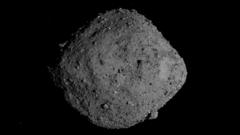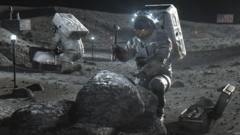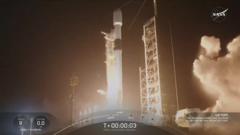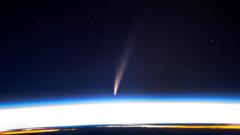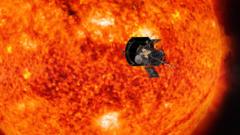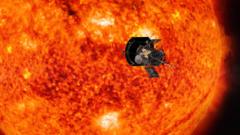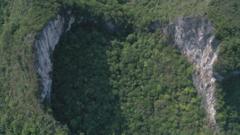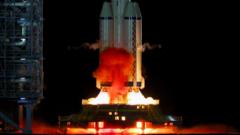Scheduled to launch shortly, NASA's Europa Clipper mission represents a groundbreaking endeavor to probe Europa, a moon orbiting Jupiter, for clues of extraterrestrial life, potentially reshaping our understanding of life's possibilities in our solar system.
NASA's Europa Clipper: Pioneering Exploration of a Mysterious Moon
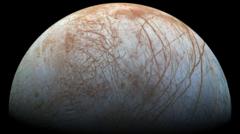
NASA's Europa Clipper: Pioneering Exploration of a Mysterious Moon
The NASA-led mission aims to uncover potential signs of life beneath Europa's icy surface, marking a significant leap in cosmic exploration.
In the coming hours, the Europa Clipper spacecraft is set to depart from Florida, embarking on a historic quest to detect signs of life beneath Europa's thick ice. Abundant evidence suggests a vast ocean under its frigid crust, potentially home to conditions suitable for life. The operation faced a brief delay due to Hurricane Milton, but engineers have now cleared its launch from Cape Canaveral.
The spacecraft, about the size of a basketball court and as heavy as an African elephant, aims to overtake the European Space Agency's JUICE mission and reach Europa by 2030. There, it will conduct a comprehensive mapping of the moon and navigate through its watery plumes.
Since the 1970s, scientists have speculated that Europa could harbor life, spurred by images of its intriguing, acerbic surface. The upcoming mission seeks to illuminate the moon's “plumbing,” with instruments designed to peer through ice layers and assess potential habitable zones.
Europa Clipper's laser instruments, tested rigorously in Antarctica, face the challenge of Jupiter's intense radiation, requiring advanced shielding for protection. The spacecraft will travel over 1.8 billion miles using a cosmic piggyback off Earth's and Mars’s gravitational fields before reaching its Jovian destination.
While scientists caution against expectations of discovering complex life forms, the mission underscores vital research into the conditions necessary for life. An international team will steer this scientific odyssey, driven by exploration and expanding the boundaries of human knowledge—a testament to our enduring quest to unravel the mysteries of the universe.
The spacecraft, about the size of a basketball court and as heavy as an African elephant, aims to overtake the European Space Agency's JUICE mission and reach Europa by 2030. There, it will conduct a comprehensive mapping of the moon and navigate through its watery plumes.
Since the 1970s, scientists have speculated that Europa could harbor life, spurred by images of its intriguing, acerbic surface. The upcoming mission seeks to illuminate the moon's “plumbing,” with instruments designed to peer through ice layers and assess potential habitable zones.
Europa Clipper's laser instruments, tested rigorously in Antarctica, face the challenge of Jupiter's intense radiation, requiring advanced shielding for protection. The spacecraft will travel over 1.8 billion miles using a cosmic piggyback off Earth's and Mars’s gravitational fields before reaching its Jovian destination.
While scientists caution against expectations of discovering complex life forms, the mission underscores vital research into the conditions necessary for life. An international team will steer this scientific odyssey, driven by exploration and expanding the boundaries of human knowledge—a testament to our enduring quest to unravel the mysteries of the universe.

